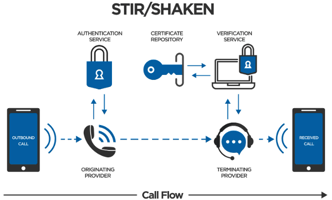In an era where artificial intelligence (AI) is not just an accessory but a central player in...
Ensuring 911 Compliance: A Guide for Businesses
In an era of rapid communication technology evolution, businesses face the challenge of aligning their systems with critical safety regulations. Notably, the implementation of Kari's Law and Ray Baums Act in the United States has highlighted the need for direct and efficient access to emergency services. This article offers a comprehensive overview for our clients at NexusBlue, focusing on the imperative features, timelines, and strategies to ensure compliance and enhance safety protocols within your organization.
Understanding the Landscape
Emergency services, specifically the 911 system, have undergone significant transformations. The traditional model, reliant on selective routers and defined service boundaries, has expanded to accommodate the complexities of modern communication, including VoIP and remote workforces. The essence of these changes is to ensure that during an emergency, the call is routed accurately and efficiently, with precise location information.
Kari's Law and the Ray Baums Act: Compliance Essentials
Kari's Law requires direct dialing to 911 without any additional prefix, suffix, or trunk access code. It also mandates on-site notification to ensure that designated personnel are alerted when a 911 call is made. The Ray Baums Act extends these requirements, focusing on dispatchable location information, which includes a verified street address and additional data to help locate the caller within a building or complex.
For Remote Workers and Multi-site Operations
The rise of remote work introduces complexities in maintaining compliance. Each remote worker's location must be accurately registered to ensure their 911 calls are directed to the appropriate emergency center. Businesses must develop mechanisms to update and manage this location information dynamically.
Timeline for Compliance and Implementation
Businesses were required to comply with Kari's Law by February 2020. Meanwhile, the Ray Baums Act has set gradual implementation deadlines, focusing on fixed telephony systems by January 2021 and non-fixed systems, including remote work settings, by January 2022. Organizations must review these timelines and ensure their systems are fully compliant.
Technical Considerations and Best Practices
-
Location Reporting: Implementing solutions like "what3words" can enhance the precision of location reporting, dividing the world into three-meter squares, each assigned a unique three-word identifier. This can be especially useful in large campuses or buildings.
-
Next Generation 911 (NG911): Transitioning to NG911 allows digital information, such as texts and videos, to be sent along with voice calls. This system improves the accuracy of location data and the overall response effectiveness of emergency services.
-
Database Management: It is paramount to maintain an accurate database of user locations, especially in a dynamic work environment. Solutions that monitor registration events on the network can automate the update process, ensuring the system's data reflects real-time configurations.
-
Geofencing: For businesses with a significant number of mobile employees, implementing geofencing can provide a mechanism to alert the enterprise's emergency response team or local 911 centers about calls originating from the company's premises.
Navigating the Regulatory Landscape
Beyond compliance, these laws underscore a business's role in safeguarding employees and clients. It's not merely about adhering to regulations but about embedding safety and responsibility into the corporate ethos. NexusBlue can guide you through this intricate process, from assessing your current systems to implementing the necessary technological and procedural enhancements.
Conclusion
Ensuring your communication systems are aligned with the latest 911 regulations is not just a legal obligation but a critical component of your organization's safety and emergency preparedness strategy. By staying informed and proactive, businesses can navigate these requirements effectively, ensuring that help is just a call away in moments of crisis.
Contact NexusBlue for detailed consultation and support in achieving compliance and enhancing emergency communication protocols. Together, we can ensure your business meets regulatory standards and sets a benchmark for safety and responsibility in the digital age.

-3.png?width=50&name=NexusBlueLogo-SimpleName(NB)-3.png)


